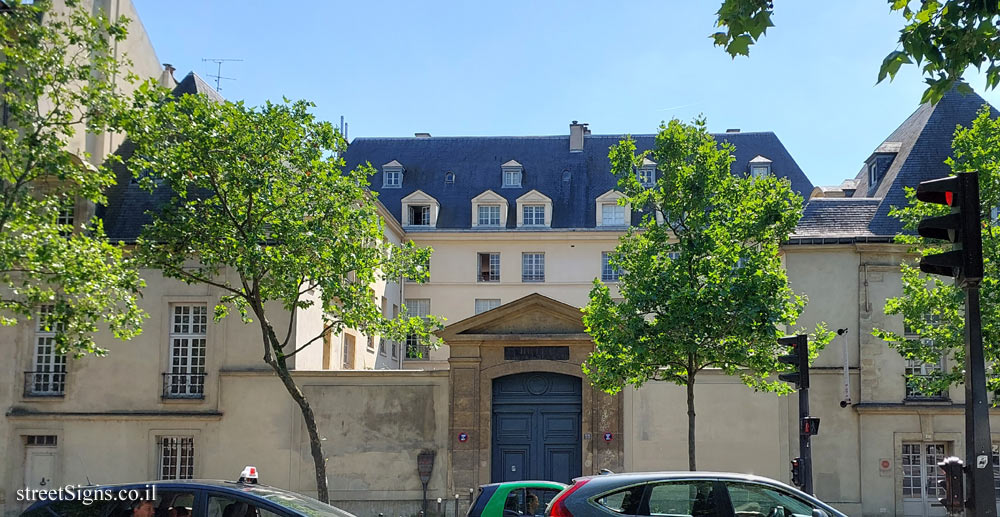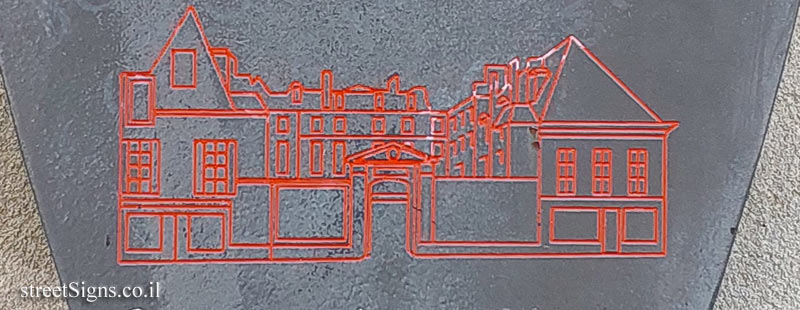One of the series of signs describing historical places in Paris. The signs were placed starting in 1992 and are also called sucettes Starck (Starck’s Lollipops) after Philippe Starck who designed them.
The place where the sign stands was photographed on the same day
 Click for a larger image
Click for a larger image The illustration in the center of the sign is shown here at magnification
 Click for a larger image
Click for a larger image The name of the place appears on the house gate
Hôtel ci-devant de Nesmond
As you can see in the following photo taken that day
 Click for a larger image Translation of the text on the sign
Click for a larger image Translation of the text on the sign:
[An illustration of a ship, symbolizing the symbol of Paris]
History of Paris Hotel de Nesmond The place was subdivided from 1260. Residence of the baker of Philippe le Bel in the 14th century, then of the Duke of Bar, the hotel was bought in 1586 by Jacques Faye d’Espesse from François de Bourbon, Duke of Montpensier. In 1643, François-Théodore de Nesmond, president of the Parliament of Paris, gave it its current appearance. His daughter-in-law, daughter of Madame de Miramion, was so vain to have her name engraved on her carriage entrance. Saint-Simon points this out in his “Mémoires”:
[Illustration of the place]
"We laugh at it, we are scandalized, but the sign has become the example of those who have flooded Paris little by little In the 17th century, Michel Blondy, famous dance master, the hotel was in the 19th century the seat of an absinthe distillery which distorted it".

 Click for a larger image
Click for a larger image  Click for a larger image
Click for a larger image  Click for a larger image
Click for a larger image  Click for all signs belonging to The History of Paris (Starck's Lollipops)
Click for all signs belonging to The History of Paris (Starck's Lollipops)
 293 Meter |
293 Meter |  296 Meter |
296 Meter |  297 Meter |
297 Meter |  330 Meter |
330 Meter |  345 Meter
345 Meter